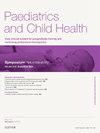Management of extubation failure on the paediatric intensive care unit
Q3 Medicine
引用次数: 0
Abstract
Extubation failure is common in PICU especially in the current era when patients with multiple complexities can be of a significant challenge. Extubation failure is defined as inability to sustain spontaneous breathing after removal of artificial airway leading to the need for re-intubation within 48 hours of a planned extubation. The pathophysiology of extubation failure can be grouped under four categories: airway, muscular power, respiratory drive, and lung parenchymal pathologies with cardiopulmonary interactions. To achieve success and maintain extubation, it is important to identify risk factors contributing for failure and fix them, wean ventilation using appropriate weaning strategies and by stepwise process, assess readiness and extubate at the optimum time. Repeated extubation failures can also be complications increasing the risk of mortality and length of stay. Causes are diverse with clinical complexity, needing multidisciplinary team approach for a comprehensive management of extubation failure. The paediatric intensivist needs to recognize children at risk of extubation failure, make a comprehensive plan and intervene at the earliest opportunity to prevent further morbidity.
儿科重症监护室拔管失败的处理
拔管失败在PICU中很常见,特别是在当今时代,当患者具有多种复杂性时,拔管失败可能是一个重大挑战。拔管失败的定义是在取出人工气道后无法维持自主呼吸,导致在计划拔管48小时内需要重新插管。拔管失败的病理生理学可分为四类:气道、肌肉力量、呼吸驱动和肺实质病变与心肺相互作用。为了取得成功并维持拔管,重要的是要识别导致失败的危险因素并加以解决,使用适当的脱机策略并逐步进行脱机,评估准备情况并在最佳时间拔管。反复拔管失败也可能是并发症,增加了死亡风险和住院时间。拔管失败的原因多种多样,临床复杂,需要多学科团队的方法进行综合管理。儿科重症医师需要认识到有拔管失败风险的儿童,制定综合计划并尽早干预,以防止进一步发病。
本文章由计算机程序翻译,如有差异,请以英文原文为准。
求助全文
约1分钟内获得全文
求助全文
来源期刊

Paediatrics and Child Health (United Kingdom)
Medicine-Pediatrics, Perinatology and Child Health
CiteScore
1.20
自引率
0.00%
发文量
70
 求助内容:
求助内容: 应助结果提醒方式:
应助结果提醒方式:


